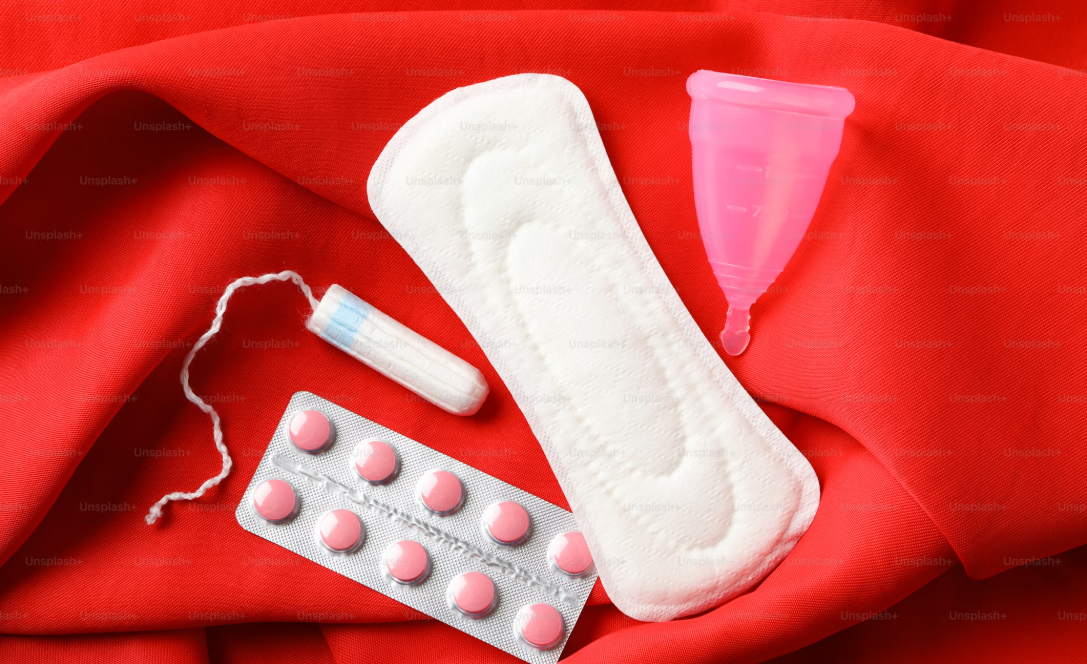Introduction
Menstrual pain is a condition that ranges from mild discomfort to severe pain, often accompanied by cramps, bloating, fatigue, and headaches. For some, menstrual pain can significantly impact daily activities and overall quality of life. While there are many over-the-counter and prescription treatments available, some individuals are turning to natural remedies, including CBD oil, for relief.
CBD (cannabidiol) oil has gained popularity in recent years for its potential therapeutic benefits, particularly for pain management. As a non-psychoactive compound derived from the cannabis plant, CBD is thought to interact with the body’s endocannabinoid system to help reduce inflammation, alleviate pain, and promote a sense of relaxation.
This guide provides an overview of CBD oil’s potential benefits for pain relief, and how to incorporate it into your menstrual care routine. Whether you’re considering CBD as an alternative or complementary therapy, this guide will explore the best practices for using CBD oil to manage menstrual discomfort effectively.
Understanding Menstrual Pain
Menstrual pain, medically referred to as dysmenorrhea, refers to the discomfort or pain experienced during menstruation. It can range from mild to severe and often occurs around the menstrual period. The pain typically affects the lower abdomen or pelvic region but may also radiate to the lower back or thighs. Menstrual pain is a common issue, with many individuals experiencing some form of discomfort, although the severity can vary greatly.
Types of Menstrual Pain
- Primary Dysmenorrhea: This type of menstrual pain is not associated with any underlying medical condition. It is the most common form of menstrual pain, typically occurring in individuals who are otherwise healthy. Primary dysmenorrhea is usually linked to the natural hormonal changes that happen during the menstrual cycle, particularly an increase in prostaglandins (chemicals involved in inflammation and pain). The pain generally starts within a few hours of the onset of menstruation and can last anywhere from a few hours to up to three days.
- Secondary Dysmenorrhea: This form of menstrual pain is caused by an underlying condition, such as endometriosis, fibroids, adenomyosis, or pelvic inflammatory disease. Unlike primary dysmenorrhea, secondary dysmenorrhea tends to develop later in life, usually after age 30, and the pain may not only occur during menstruation but can also happen at other times during the month. The intensity of pain often increases over time.
Common Symptoms
- Cramping: Intense, throbbing or dull aches in the lower abdomen or pelvic area.
- Bloating: A feeling of fullness or puffiness in the abdomen, which may make clothes feel tight.
- Fatigue: Low energy levels, which can be a result of hormonal shifts or disrupted sleep.
- Headaches: Tension or migraine-like headaches, often due to hormonal fluctuations.
- Back Pain: Discomfort or aching in the lower back, often linked to menstrual cramping.
Causes of Menstrual Pain
Menstrual pain is primarily caused by hormonal fluctuations and uterine contractions:
- Hormonal Fluctuations (Prostaglandins): High levels of prostaglandins—hormone-like substances—trigger uterine contractions to shed the lining, but they can also cause pain and discomfort. Increased prostaglandins are linked to more intense cramps.
- Uterine Contractions and Inflammation: As the uterus contracts to expel its lining, inflammation can increase pain. In conditions like endometriosis or fibroids, these contractions and inflammation can be even more severe.[2]
What is CBD oil
CBD (Cannabidiol) is a compound found extracted from cannabis plants. Unlike THC (tetrahydrocannabinol), which is the psychoactive component responsible for the “high,” CBD does not cause intoxication and is primarily used for its potential therapeutic effects, such as pain relief and anti-inflammatory properties.
Extraction Process
CBD oil is typically extracted from the hemp plant, a variety of cannabis with low THC content. The most common extraction methods are CO2 extraction and solvent extraction, both of which separate CBD from other plant materials.[3]
How CBD works on the body
The Endocannabinoid System (ECS)
The Endocannabinoid System (ECS) is a complex network of receptors, enzymes, and endocannabinoids (naturally occurring compounds) that regulate various bodily functions. The ECS helps maintain balance, or homeostasis, by influencing key systems such as the immune system, nervous system, and digestive system.
ECS and Pain, Inflammation, and Mood
- Pain Regulation: The ECS plays a key role in pain perception. By interacting with cannabinoid receptors, CBD can help reduce pain signals and inflammation, offering relief from conditions like menstrual cramps.[4]
- Inflammation: CBD has anti-inflammatory properties, partly through its action on the ECS, which helps to decrease swelling and tissue damage associated with chronic pain. [5]
- Mood Stabilization: The ECS also affects mood and stress responses. CBD’s interaction with the ECS may help regulate anxiety, depression, and stress, contributing to emotional balance and relaxation.[6]
How to use CBD oil for menstrual pain
Forms of CBD Oil
- Tinctures: Liquid CBD is taken under the tongue for fast absorption.
- Capsules/Edibles: Convenient, but slower onset as they must be digested.
- Topicals: Creams or oils applied directly to the skin for localized pain relief.
- Vapes: Quick absorption through inhalation, though not recommended for everyone.
Dosage Guidelines
Start with a low dose and gradually increase based on how your body responds. The ideal dosage for menstrual pain varies by individual.
Best Time to Use CBD Oil
- Before Menstrual Cramps: Take CBD a few days before your period to prevent pain.
- During Cramps: For immediate relief, use CBD during your period.
Application Methods
- Tinctures/Capsules: Take orally for systemic pain relief.
- Topicals: Apply directly to the abdomen or lower back for targeted pain relief.
- CBD-Infused Bath Products: Soaking in a CBD bath can relax muscles and ease cramps.[7]
Choosing the right CBD
CBD Spectrum
- Full-Spectrum: Contains all cannabinoids, terpenes, and trace THC, offering the “entourage effect” for enhanced benefits.
- Broad-Spectrum: Similar to full-spectrum but THC-free, providing most cannabinoids without the psychoactive effects.
- CBD Isolate: Pure CBD, with no other cannabinoids or THC, is ideal for those who want just CBD.
How to Select Quality CBD Products
- Third-Party Lab Tests: Ensure the product has been independently tested for potency and purity.
- Ingredient Transparency: Choose products with clear ingredient lists and no artificial additives.
- Potency: Select a product with the right CBD strength
- Full-Spectrum or Broad-Spectrum: Choose based on whether you want the benefits of THC or prefer to avoid it.
Top Brands for Menstrual Pain Relief
- Cannazo India
- Charlotte’s Web
- Lazarus Naturals
Conclusion
CBD oil offers a promising natural option for managing menstrual pain. By interacting with the body’s endocannabinoid system (ECS), CBD may help alleviate discomfort from cramping, inflammation, and associated symptoms like anxiety and mood swings. With its anti-inflammatory, pain-relieving, and relaxing properties, CBD can be a beneficial addition to your menstrual care routine.
While CBD is generally well-tolerated, it’s essential to consult with a healthcare provider before using it, especially if you have any underlying health conditions or are on medication. With proper selection and usage, CBD can be an effective, natural alternative or complement to traditional methods for menstrual pain relief.
Reference
- Zelman, E. (2023, March 21). CBD and menstrual pain: Can CBD help relieve menstrual cramps and pain? PainPathways Magazine. https://painpathways.org/cbd-and-menstrual-pain
- Villines, Z. (2021, April 20). Period pain (dysmenorrhea) and its causes. https://www.medicalnewstoday.com/articles/period-pain-dysmenorrhea
- what is CBD oil – Bing. (n.d.). Bing. https://www.bing.com/search
- Villanueva, M. R. B., Joshaghani, N., Villa, N., Badla, O., Goit, R., Saddik, S. E., Dawood, S. N., Rabih, A. M., Niaj, A., Raman, A., Uprety, M., Calero, M., & Khan, S. (2022). Efficacy, Safety, and Regulation of Cannabidiol on Chronic Pain: A Systematic Review. Cureus, 14(7), e26913. https://doi.org/10.7759/cureus.26913
- Lowin, T., Tingting, R., Zurmahr, J., Classen, T., Schneider, M., & Pongratz, G. (2020). Cannabidiol (CBD): a killer for inflammatory rheumatoid arthritis synovial fibroblasts. Cell death & disease, 11(8), 714. https://doi.org/10.1038/s41419-020-02892-1
- Batalla, A., Bos, J., Postma, A., & Bossong, M. G. (2021). The Impact of Cannabidiol on Human Brain Function: A Systematic Review. Frontiers in pharmacology, 11, 618184. https://doi.org/10.3389/fphar.2020.618184
- Dresden, D. (2022, April 27). CBD for menstrual cramps: Options, considerations, and alternatives. https://www.medicalnewstoday.com/articles/cbd-for-menstrual-cramps#product-list
- Malkin, A. (2021, July 8). Tips on how to choose the right CBD product. CBD.market. https://cbd.market/cbdblog/tips-on-how-to-choose-the-right-cbd-product





